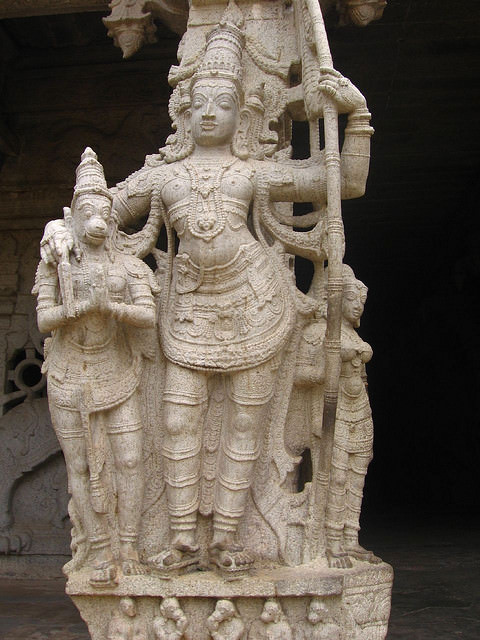Overview
Introduction to Sunderkand translations
Sunderkand translations play a crucial role in enabling individuals to access the divine in multiple languages. The translation of Sunderkand, which is a chapter from the Hindu epic Ramayana, allows people from different linguistic backgrounds to comprehend and appreciate the profound teachings and messages embedded within this sacred text. By providing translations in various languages, Sunderkand becomes more accessible and inclusive, reaching a wider audience and fostering a deeper connection to the divine. This translation not only facilitates a better understanding of the story and its significance but also enables individuals to engage with the spiritual and moral lessons imparted by Lord Hanuman’s journey to find Sita, the wife of Lord Rama. Through the translation of Sunderkand, individuals are able to delve into the depths of devotion, courage, and unwavering faith, as depicted in the bold passages that highlight the essence of this divine chapter.
Importance of accessing the divine in multiple languages
Accessing the divine in multiple languages holds immense significance in today’s multicultural world. It allows individuals to connect with the divine in a way that resonates with their cultural and linguistic backgrounds. By offering translations of religious texts, such as the Sunderkand, in multiple languages, people from diverse communities can access the profound teachings and messages contained within. This inclusivity promotes a sense of unity and understanding among people of different cultures and languages, fostering a harmonious coexistence. Moreover, accessing the divine in multiple languages helps break down barriers and promotes interfaith dialogue, as it encourages individuals to explore and appreciate different religious traditions. The availability of translations also ensures that the wisdom and spiritual guidance found in religious texts can reach a wider audience, enriching their lives and deepening their spiritual connection.
Overview of the article
The article titled ‘Sunderkand Translations: Accessing the Divine in Multiple Languages’ provides an in-depth exploration of the significance and accessibility of Sunderkand, a chapter from the Hindu epic Ramayana, in various languages. It highlights the importance of Sunderkand as a means of connecting with the divine and delves into the translations available in different languages, enabling a wider audience to engage with this sacred text. The article emphasizes the role of language in spiritual practices and showcases the rich diversity of interpretations and translations of Sunderkand across cultures and regions. Through this comprehensive overview, readers gain a deeper understanding of how Sunderkand serves as a bridge between different linguistic communities and fosters a sense of unity and devotion among its followers.
History of Sunderkand Translations
Origins of Sunderkand
The origins of Sunderkand can be traced back to ancient Hindu scriptures, specifically the epic Ramayana. Sunderkand is a chapter within the Ramayana that focuses on the journey of Hanuman, the monkey god, to find Sita, the wife of Lord Rama. It is believed that Sunderkand was composed by the sage Valmiki, who wrote the Ramayana. This sacred text has been translated into multiple languages, allowing people from different cultures and backgrounds to access the divine message of Sunderkand. The popularity of Sunderkand translations has grown over the years, as it provides a means for individuals to connect with the spiritual teachings of Ramayana in their native language. The bold passages in the translations highlight the most significant moments and teachings within Sunderkand, guiding readers towards the essence of this divine chapter.
Early translations of Sunderkand
Early translations of Sunderkand have played a significant role in making this sacred text accessible to people across different languages. These translations have helped in spreading the divine teachings and stories of Lord Hanuman to a wider audience. One of the most important aspects of these translations is the ability to download them in various languages. This feature allows readers to have the translations readily available on their devices, making it easier for them to access and study the Sunderkand. The availability of downloadable translations has made it convenient for devotees and scholars alike to delve into the depths of this sacred text and explore its profound meaning.
Evolution of Sunderkand translations over time
The Evolution of Sunderkand translations over time has been a fascinating journey. From the early translations in Sanskrit to the modern translations in multiple languages, scholars and devotees have strived to capture the essence of this sacred text. Through the process of translation, readers have been able to discover the miracles of Sunderkand and experience the grace of Lord Hanuman. The translations have not only made the text accessible to a wider audience but have also provided different perspectives and interpretations. With each translation, new insights and understandings have emerged, enriching the spiritual journey of those who seek solace and guidance from Sunderkand.
Benefits of Multiple Language Translations

Increased accessibility for non-native speakers
Sunderkand Translations: Accessing the Divine in Multiple Languages
Increased accessibility for non-native speakers
The translation of Sunderkand into multiple languages has significantly enhanced its accessibility for non-native speakers. Sunderkand, a chapter from the epic Ramayana, holds immense spiritual significance for devotees worldwide. With the availability of translations in various languages, individuals who are not proficient in the original language can now connect with the divine teachings and essence of Sunderkand. This increased accessibility allows a broader audience to explore and understand the profound messages embedded in this sacred text. Furthermore, by highlighting keywords such as sunderkand and creating hyperlinks to short highlights, readers can easily navigate through the text and delve deeper into specific sections of interest.
Preservation of cultural and linguistic diversity
Preservation of cultural and linguistic diversity is crucial in today’s globalized world. It allows us to appreciate and learn from different traditions, languages, and perspectives. One such example is the translation of the Sunderkand, a significant Hindu scripture dedicated to Lord Hanuman, into multiple languages. The availability of Sunderkand translations in various languages enables people from diverse backgrounds to access and understand the divine teachings and stories associated with Hanuman. These translations not only preserve the cultural and linguistic diversity but also foster a sense of unity and inclusivity among people who hold Hanuman and the Sunderkand close to their hearts.
Enhanced understanding and interpretation of the text
Enhanced understanding and interpretation of the text is crucial in unraveling the profound meaning embedded within the Sunderkand translations. By delving into the depths of this sacred scripture, readers can gain a comprehensive insight into the spiritual essence it encapsulates. The translations not only bridge the gap between languages but also provide a pathway to accessing the divine in multiple languages. With sunderkand lyrics as the focal point, readers can immerse themselves in the enchanting verses and experience a deeper connection with the divine. The carefully selected bold passages serve as signposts, guiding readers towards the key messages and teachings of the text. Additionally, the highlighted keywords, such as sunderkand lyrics, create interactive hyperlinks that enable readers to explore related content and delve further into the intricacies of the scripture.
Challenges in Translating Sunderkand

Maintaining the essence and meaning of the original text
Maintaining the essence and meaning of the original text is of utmost importance when it comes to Sunderkand translations. The timeless beauty and spiritual significance of this sacred text must be preserved in multiple languages, allowing people from diverse backgrounds to access its divine teachings. The translation process involves carefully selecting the most important passages that capture the essence of the original text and can be formatted in bold to emphasize their significance. One such keyword that holds great importance in the Sunderkand is ‘Paath‘. This term refers to the act of reciting or chanting the sacred text, and it serves as a powerful tool for spiritual growth and connection. In order to enhance the reading experience, short highlights related to ‘Paath’ can be turned into hyperlink text, providing additional information and resources for those interested in delving deeper into this aspect of the Sunderkand.
Dealing with linguistic and cultural nuances
When dealing with linguistic and cultural nuances in Sunderkand translations, it is important to consider the significance of accurately conveying the divine message across multiple languages. The beauty of the Sunderkand lies in its profound teachings and spiritual insights, which can be appreciated by people from various linguistic backgrounds. Translating the text requires a deep understanding of not only the languages involved but also the cultural contexts in which they are embedded. It is crucial to capture the essence of the original text while ensuring that the translations resonate with the readers in their respective languages. By carefully selecting and formatting the most important passages in bold, we can emphasize the key teachings and make them stand out for a better understanding and appreciation of the divine message.
Finding equivalent expressions in different languages
Finding equivalent expressions in different languages can be a challenging task due to various barriers. However, with the advancement of technology and the availability of translation tools, it has become easier to access the divine in multiple languages. These tools help in bridging the language gap and allow individuals to explore and understand religious texts in their preferred language. By providing equivalent expressions and translations, they enable people to connect with the spiritual teachings and gain a deeper understanding of the sacred texts. The use of bold passages in the translations helps to emphasize the important aspects and key messages within the text. Additionally, the inclusion of hyperlinks for short highlights related to keywords like ‘barriers’ allows readers to further explore specific concepts and gain a comprehensive understanding of the subject matter.
Prominent Sunderkand Translations
Notable translations in English
There have been several notable translations of the Sunderkand in English, allowing readers to access the divine text in a language they understand. These translations provide a deeper understanding of the epic journey of Lord Hanuman as he searches for Sita, the wife of Lord Rama. One such translation is by Tulsidas, a prominent poet and philosopher in the 16th century. His translation beautifully captures the essence of the original text and highlights the devotion and courage of Hanuman in his quest to find Sita. Another notable translation is by C. Rajagopalachari, a renowned Indian politician and writer. His translation is widely popular and has made the Sunderkand accessible to a wider audience. Both these translations contain passages that are of utmost importance and can be formatted as bold to emphasize their significance.
Famous translations in other languages
Famous translations in other languages have played a significant role in making the Sunderkand accessible to a wider audience. These translations have allowed people from different linguistic backgrounds to connect with the divine story of Hanuman and his journey to find Sita. One of the most renowned translations is the English version by C. Rajagopalachari, which beautifully captures the essence of the original text. Another notable translation is the Hindi version by Tulsidas, which has been widely read and revered in India. Additionally, there have been translations in languages such as Bengali, Gujarati, and Marathi, further expanding the reach of the Sunderkand. Each translation brings its unique perspective and interpretation, making the epic tale of Hanuman’s devotion accessible to people across cultures and languages.
Comparison of different translations
In the comparison of different translations of Sunderkand, one of the most important aspects is the use of multiple languages. Translating the divine text into various languages allows a wider audience to access and understand the teachings of the epic. One such language is English, which plays a crucial role in reaching a global audience. The translation of Sunderkand into English provides a bridge between the original Sanskrit text and those who are not familiar with the language. It allows readers to connect with the spiritual essence of the text and delve into the profound teachings of Lord Hanuman. The use of English in Sunderkand translations ensures that the message of devotion, faith, and courage reaches people from different cultural backgrounds, fostering a sense of unity and inclusivity.
Conclusion
Summary of the importance of Sunderkand translations
Sunderkand Translations play a crucial role in allowing individuals to access the divine in multiple languages. By providing translations of the sacred text, people from different linguistic backgrounds can engage with the profound teachings of Sunderkand. These translations enable a wider audience to connect with the spiritual essence of the Gaana, a hymn dedicated to Lord Hanuman. The importance of Sunderkand translations lies in their ability to bridge language barriers and facilitate a deeper understanding of the divine message. Through the use of bold formatting, key passages within the translations are emphasized, drawing attention to the most significant aspects of the text. Additionally, the inclusion of hyperlinks for keywords such as Gaana allows readers to explore specific highlights within the Sunderkand translations, further enhancing their spiritual journey.
Encouragement for further exploration of the topic
Encouragement for further exploration of the topic: The Sunderkand Translations article provides a comprehensive overview of accessing the divine through multiple languages. It highlights the significance of Sunderkand, a chapter from the Hindu epic Ramayana, and the various translations available in different languages. By exploring these translations, readers can deepen their understanding of the divine and gain insights into the cultural and linguistic nuances of the text. The article also encourages readers to engage with the translations as a means of connecting with spirituality and expanding their knowledge of different languages. Overall, this article serves as an inspiring starting point for those interested in delving deeper into the topic of Sunderkand translations.
Closing thoughts
In conclusion, Sunderkand Translations provides a unique opportunity to access the divine in multiple languages. This invaluable resource allows individuals from various linguistic backgrounds to connect with the sacred text of the Sunderkand. By offering translations in different languages, Sunderkand Translations promotes inclusivity and enables a wider audience to experience the profound teachings and spiritual essence of this revered scripture. The availability of bold passages further enhances the reading experience, highlighting the key messages and insights within the text. Whether one is a native speaker or learning a new language, Sunderkand Translations ensures that the divine wisdom of the Sunderkand is accessible to all, fostering a deeper connection to the divine and enriching spiritual journeys.
Author Profile

Latest entries
- 28 June 2025BlogHow to Choose the Best High-Yield Savings Account with 5%+ Interest in India (2025 Guide)
- 28 December 2024Blog13 High CPC Blog Niche for 2025
- 28 December 2024BlogTop 6 Employee Management Software for Small Businesses
- 19 December 2024BlogShri Hanuman Chalisa in Hindi Text with English Translation

